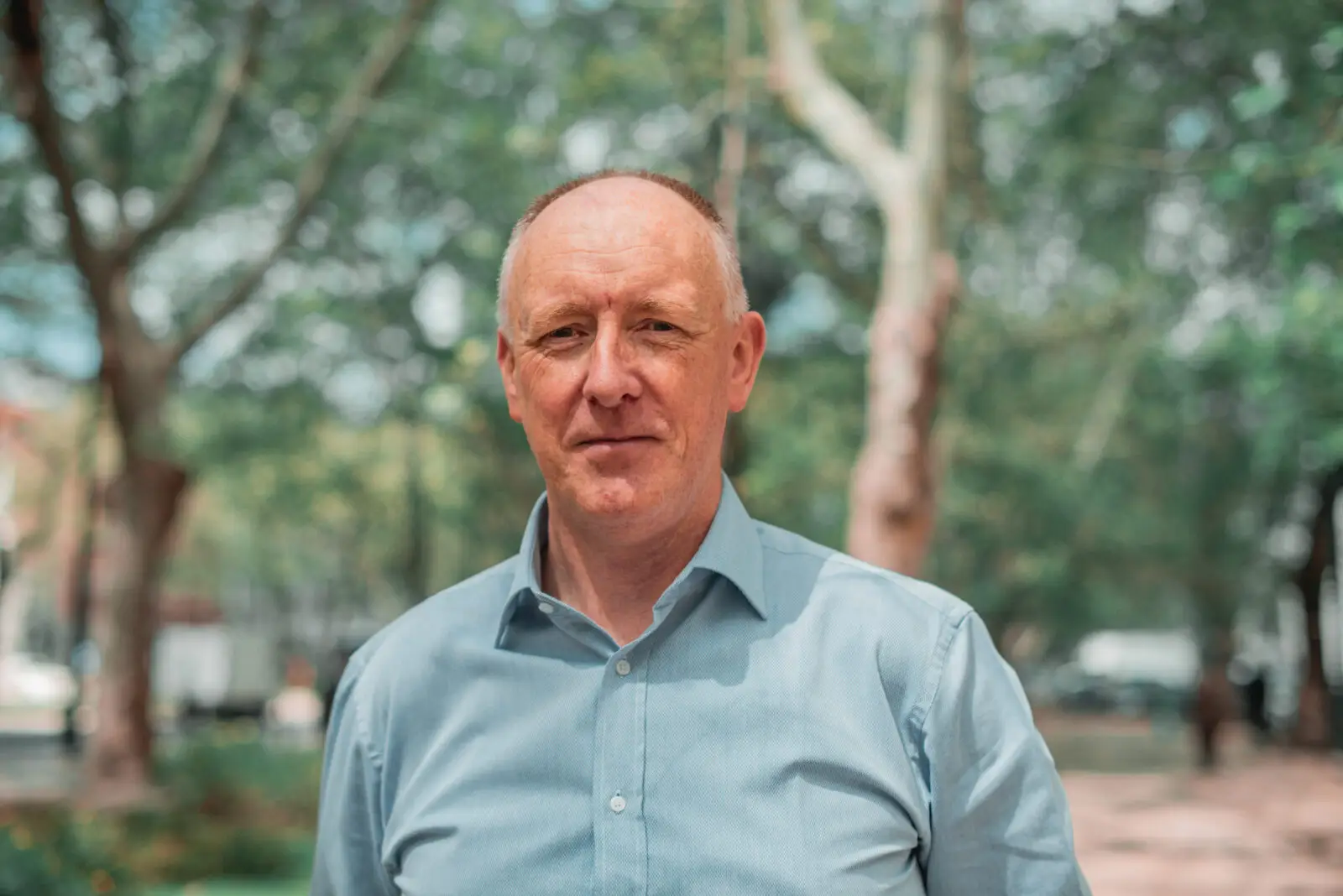Neil Johnson
Chief Executive of the West of Ireland Cardiac Foundation and founder of the Global Heart Hub
Ireland

Patients’ voices, not only their hearts, must be heard
For the past three decades, Neil Johnson has been working with patients who live with cardiovascular disease (CVD). Empowering this global community to participate in their care drives him to help patients advocate for their health, and to connect patient organisations and caregivers. It is a crucial filler of the current “implementation gap” so that someday we can vanquish — or at least mitigate — the world’s leading cause of mortality.
With thanks to Servier, a global sponsor of World Heart Day, for their nomination of Neil Johnson as one of our heart heroes.
When it comes to awareness, diagnosis and treatment, Neil Johnson has seen some progressive change, albeit slow, over the years. It is one reason for his strong focus today on prevention and research. “We’re all going to become a patient at some point in our lives, and I fundamentally believe that the patients’ voice could serve as the disruptor that improves CVD health”, he says.
Neil ‘wears many hats’: He is Chief Executive of the West of Ireland Cardiac Foundation, known as Croí (Gaelic for ‘heart’) and a founder of Ireland’s first Heart and Stroke Centre dedicated to Cardiovascular Health & Wellbeing. The Centre has been recognised as a “European Centre of Excellence in CVD Prevention.” He is also the founder of the Global Heart Hub, the first not-for-profit international alliance of heart patient organisations.
“Whether prescribed as preventive care or following diagnosis, sticking to a treatment plan is crucial for cardiovascular health,” says Neil. “Adherence to medication is sometimes a challenge and yet it plays such a determining role in patients’ well-being and their prospects for healthier heart living.”
A changing landscape
Most CVD patient organisations have grown out of local and regional support groups. “Through the Global Heart Hub we aim to connect, inform, and equip a global community of patient organisations. This entails educating all along the healthcare chain and involving the patients themselves, their caregivers and healthcare providers. This way, we can ensure the best possible outcomes for those living with heart diseases.”
In his experience, patients are increasingly seeking out information. In many places, nurses and nurse prescribers are responding to needs, and trained accordingly to fill gaps in care, to bolster the workforce. “Shared decision-making is becoming more frequent than in decades past, whereby the unique patient experience is taken into account and doctors and caregivers should not feel threatened by this,” he says.
One example cited as worth replicating is Slovenia’s screening programme for familial hypercholesterolemia (FH). The FH programme can identify incidence of a genetic over-production of cholesterol, a high-risk factor for heart disease – in children as young as five years old – and ultimately, determine a treatment plan to prevent premature mortality.
Targeted early detection and screening should become standard for common risk factors and conditions such as hypertension, cholesterol, valve disease, and arrythmias – “detection is relatively inexpensive and infinitely much cheaper than treating the complication.” However, atherosclerotic cardiovascular disease (ASCVD) which causes blocked arteries and the death of millions of people each year, is where we need to bring the highest level of public and political attention. “We have an “invisible nation” of more than 300 million worldwide living with ASCVD which is the underlying cause of 85% of heart attack and stroke related deaths – many people are surprised to learn that loss of life due to ASCVD is roughly 60% higher than the number of deaths attributed to cancer.”
Ageism and asbestos
Ageism is cited as another factor to be addressed in the approach to CVD. “We need to put more focus on early screening and diagnosis, but also on the ‘third age.’ A patient who is over 60 or over 70 years old still has a life, probably looks after grandchildren, and probably even still works. Respect for healthy ageing should know no bounds.”
In addressing food and lifestyle, a striking analogy is made with global health and safety regulations to renovate or remove buildings made with asbestos: “Why don’t we have a global charter for health or an EU Health Action Plan that regulates how we put food together so that we keep the bad stuff out of what we eat and ensure access to the choices that do us and our hearts good.”
Are better and better treatments becoming a ‘double-edged sword,’ leading to complacency? There is sometimes such a tendency, Neil says, adding that “if you just invest in caring for the sick, you are missing a piece of the jigsaw so let’s implement what we know already about prevention and support patient proactiveness.”
Simultaneously aware of the progress made and the milestones yet to be marked, Neil’s ‘many hats’ seem set to stay in place.
Connect with Neil Johnson to learn more.
Read more heart hero stories here.